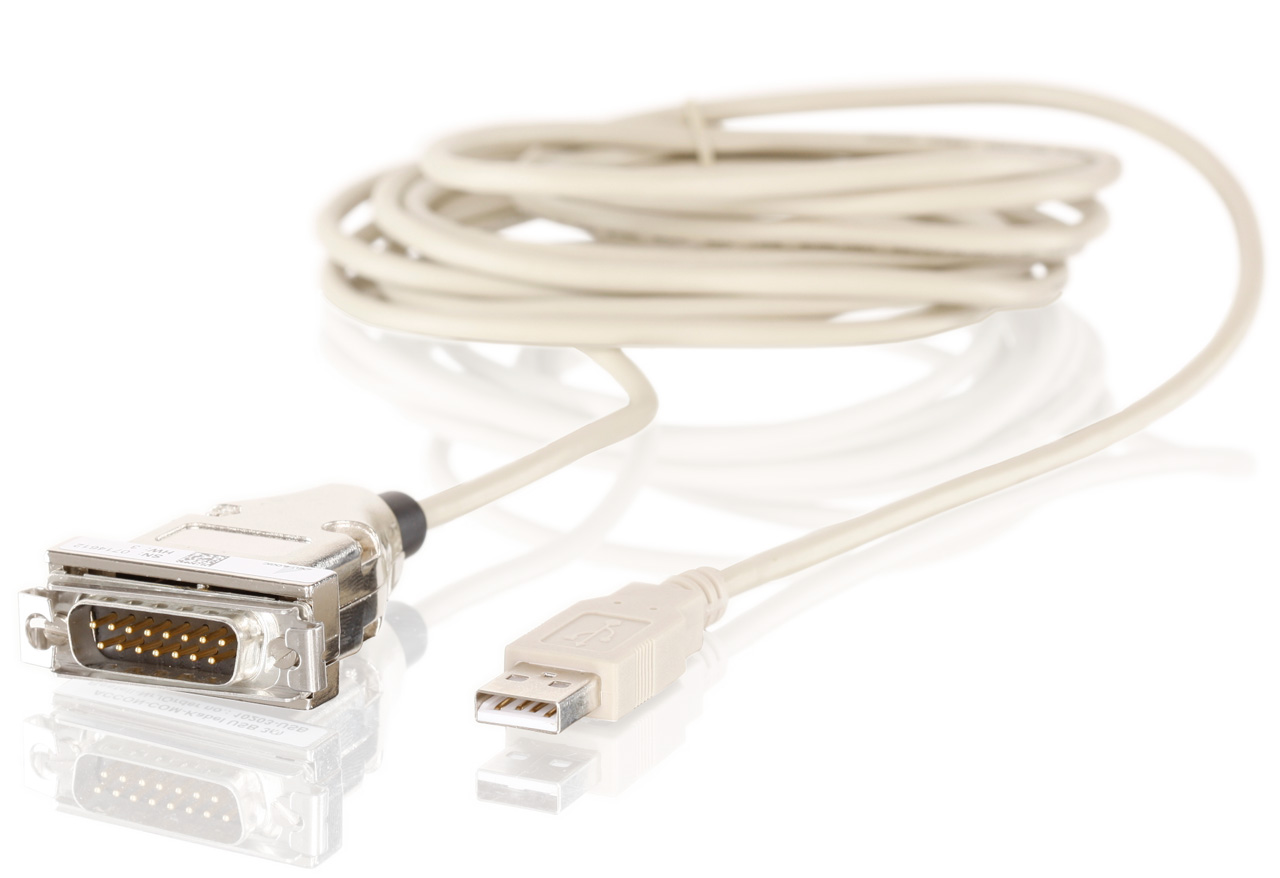ACCON-COM-Cable USB 3m
S5 adapter with USB connector
- For S5 PLCs of the U series
- Connection via USB
- No separate power supply necessary
- Even usable with STEP 5
S5 adapter with USB connection
The ACCON-COM-Cable USB is an adapter to connect a PC with an S5 PLC. It is fed via USB. Therefore, an external power supply is not necessary.Perfect fields of application
- As programming adapter to create and change the PLC program
- As communication adapter for visualizations
- As communication adapter to access the PLC's data
Varied ranges of application
- Programming a S5 PLC, e.g. with ACCON-PG or the Siemens STEP 5 software, on a notebook without RS-232 interface
- Connecting visualizations to S5 PLCs
Convincing and varied
The included software creates a virtual serial interface. Each software supporting a serial connection to the S5 PLC can therefore use the ACCON-COM-Cable USB.Technical highlights
- Connection via USB
- No separate power supply necessary
- Even usable with STEP 5
| Supported operating systems | Windows 2000, XP, 2003 - no 64 bit versions |
| Connection to the PC | USB connection cable stationary mounted, 3 m or 5 m depending on model |
| Connection to the PLC | TTY with 15-pin SUB-D plug |
| Supported PLCs | S5 of the U series |
| Protection type | IP 20 |
| Supply voltage | Via USB |
| Galvanically isolated | No |
| Extension possible | Yes, max. 10 m USB extension |
| Driver software V1.5.2 for the ACCON-COM-Cable USB | ||
| SetupS5USBDrv.zip | 930 KB | August 13, 2007 |
| USB device driver for the ACCON-COM-Cable USB | ||
| S5USBDriver.zip | 122 KB | April 06, 2006 |
Why can I not use the ACCON-COM cable USB on Windows 7?
The installation setup of the Sys-Tray application can not be performed under Windows 7. After manual installation, communication with the ACCON-COM cable USB and the Sys-Tray application can be successfully carried out.
The USB device driver can not be uninstalled. It appears the error message "error message Error, ftdiun2k.ini not found". How can I solve this?
Rename the file "FTD2XXUN.INI" in the folder "System32" into "FTDIUN2K.INI" and perform the uninstall again.





